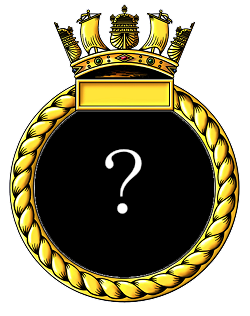



The nucleus of 840 Squadron assembled at RNAS Eastleigh, Hampshire on May 4th 1942 in preparation for passage to Kingston, Jamaica, where it was to officially form at RNAS Palisadoes on June 1st as a torpedo bomber reconnaissance squadron, Lt. (A) L. R. Tivy RN in command.
When the two pilots, three observers, and maintenance personnel, arrived at Palisadoes 4 Swordfish Mk.Is were issued and the fledgling squadron began working up. Two more aircrew, one pilot and another observer arrived shortly after making the squadron strength three crews with one spare observer. They were the sixth, and last, torpedo bomber reconnaissance squadron to be formed at Palisadoes, 837 squadron was still working-up on the station when 840 arrived, but they departed for USNAS Floyd Bennett Field, New York in the first week of July, leaving 840 as the stations only resident squadron. In September they received 4 Swordfish Mk.IIs and on the 25th the squadron flew to USNAS Miami to continue their work up before embarking on the escort carrier HMS BATTLER on December 12th.
They were to spend the next two weeks on the ship for a short period of carrier flying training while taking passage to New York. They disembarked on December 26th, flying ashore to USNAs Quonset Point, Rhode island. The squadron was to embark in the escort carrier HMS ATTACKER which had arrived at Norfolk Navy Yard on January 1st for modifications and repair work; they were joined at Quonset Point by the 4 Swordfish of 838 squadron which had joined ATTACKER at San Francisco in November. Training continued through January and February including a period of flying with ATTACKER which was providing a deck for RN squadrons in the Chesapeake Bay area including the Martlet fighters from 882, 896 and 898 squadrons and Swordfish from 838 and 840 squadrons fr0m USNAS Quonset Point.
The two squadrons flew out to join the ship on March 2nd to take passage to the UK. ATTACKER was to escort a convoy from Curacao to the UK and she took passage to Willemstad, Curacao via Kingston Jamaica. ATTACKER sailed from Curacao with convoy CU.01 on March 20th as part of the escort force and her Swordfish provided anti-submarine cover for the Atlantic crossing. ATTACKER anchored on the Clyde on April 1st and sailed for Liverpool the following day; both 838 and 840 squadrons disembarked, flying ashore to RNAS Stretton on route to RNAS Machrihanish.
While at Machrihanish a new commanding officer arrived, on April 21st, Lt (A) C .M. T. Hallewell RN, who relieved Lt. Tivy and 840 was reallocated for MAC-ship duty. They flew to RNAS Hatston, Orkney on May 3rd. On May 25th the squadron embarked in HMS ACTIVITY for four days of deck landing training, returning to Hatston on the 28th. The squadron flew south again on June 8th, returning to RNAS Machrihanish; this was only a short stay before moving to RNAS Maydown, Northern Ireland on June 27th. Maydown was to be the home base for all MAC ship aircraft and 840 squadron was allocated to the MV EMPIRE MACANDREW, embarking on July 12th.
Until July 1943 the squadron’s flying safety record had been very good, there were only two recorded incidents, both of which happened on board the EMPIRE MACANDREW; while joining the ship on the 12th Lt. J. L. Tucker, RNZNVR, in Swordfish LS189, bounced over all the arrestor wires and crashed over the bows, he was rescued safely. On the 15th Sub-Lt. A. H. Steel hit the island on take-off in LS188.

The Merchant Aircraft Carrier (MAC ship) EMPIRE MACANDREW at Greenock in July 1943. Image: © IWM A 18026
In August Admiralty policy regarding squadrons for MAC ship duty was changed; there was to be a centralisation of this task into a single squadron, No.836 Squadron, based at to RNAS Maydown. With effect from August 13th 1943, 840 squadron was disbanded and redesignated as ‘M’ Flight of 836 squadron.

Atlantic 1943
Swordfish I Jun -Sep 1942
Swordfish II Sep 1942 - Aug 1943
Lt. (A) L R Tivy RN 1 Jun 1942
Lt. (A) C. M. T. Hallewell RN 21 Apri 1943
Squadron disbanded 13 Aug 43
None
© 1999-2024 The Royal Navy Research Archive All Rights Reserved Terms of use Powered byW3.CSS
Press F5 to refresh the page after posting your comment or to hide the form
Note
T27 ran aground, en route to L'Aber Vrac'h for repairs after an
action against Force 26 on the night of 28/29 April 1944. She was
finally destroyed by British MTBs on 6 May after several
unsuccessful air attacks. See
https://en.wikipedia.org/wiki/Elbing-class_torpedo_boat
Comments (0)